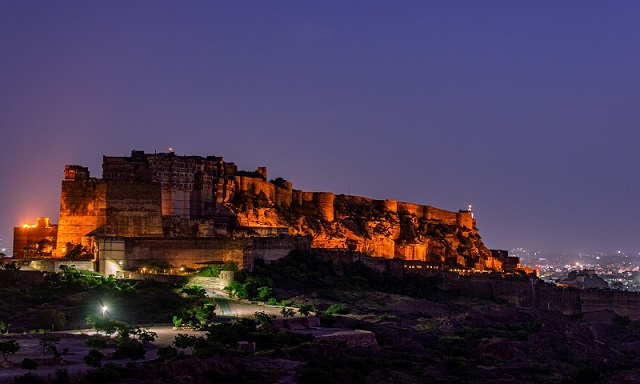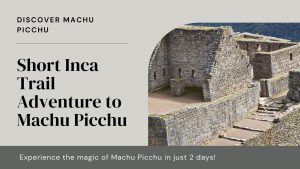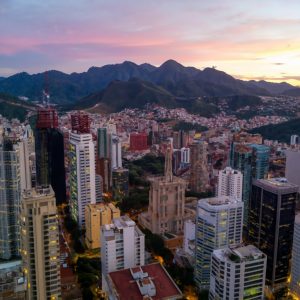Jodhpur – The Blue City of Heritage

Jodhpur, Rajasthan’s second-largest city, has a fascinating history. In reality, Jodhpur, a city on the edge of the Thar desert and some 155 miles from the Pakistani border is where the name of the eponymous pants originates. The son of the Maharaja of Jodhpur, Pratap Singh, made these peculiar pants for his polo team to wear when they went to see the Queen of England in 1897. It’s well-known for its blue buildings, which were originally painted that colour to signify that Brahmins, India’s highest caste, resided there.
Places to visit on your Jodhpur Trip!
Mehrangarh Fort
The massive Mehrangarh Fort, which looms over the “Blue City,” is one of the largest and most well-known forts. Although it is a historically significant building, there is still much more to discover inside. The fort has undergone private restoration work, and its museum houses a spectacular collection of royal artefacts, including over 15,000 items from the collection of Maharaja Gaj Singh II. It also contains the only specialist museum shop in India. The daily cultural performances that take place all over the fort as part of the emphasis on folk music and art are another highlight.
Mehrangarh Fort Zip Line Adventure
Adventurers simply cannot resist the opportunity to zip line against the breathtaking Mehrangarh Fort backdrop. The circuit, which takes about 90 minutes to complete, consists of six zip lines. Up to 12 people in a group can leave at predetermined intervals. It is located on the northern side of Mehrangarh Fort.
Rest for a while at Jaswant Thada
In 1899, this expertly carved monument was built as a tribute to Maharaja Jaswant Singh II. Rathore royal paintings are displayed on the walls inside, and the outside features odd domes and white marble lattice screens. It’s a serene environment with stunning views over the city and Fort. After their travels, many exhausted travellers relax on the front lawn.
Rao Jodha Desert Rock Park
The Rao Jodha Desert Rock Park was established in 2006 with the goal of restoring the natural ecology of a substantial rocky wasteland area close to the Fort. After years of abandonment, an invasive prickly bush had taken over the park. After the bush was removed, more than 80 native types of rock-loving plants from the Thar desert were planted there. About 200 acres of reclaimed land make up the Park, which contains a walking path. It’s fascinating to explore at different times of the year because its foliage varies with the seasons.
Old Bazaar and Clock Tower
A trip to Jodhpur wouldn’t be complete without taking in the energetic Old City. Many guests choose to stay there because it is home to some of the most affordable hotels in Jodhpur and offers spectacular views of the fort. The clock tower, the most recognisable landmark in the Old City, is there and is still in use. Nearby Sadar Market still exudes the atmosphere of a classic village market. It offers a wide variety of goods for sale, including handicrafts, spices, saris, and cloth. It is chaotic and vibrant.
Also Read: Best Places to Visit in Jaipur for one day
Toorji Ka Jhalra
With a colourful twist, an innovative urban restoration project is bringing the Old City back to its former splendour. As a result, Jodhpur boasts a recently repaired historic stepwell. It is located to the north of the clock tower. It was Toorji ka Jhalra, a structure constructed in the 1740s and long since abandoned. In the neighbourhood, a chic square with cafes and shops has been developed.
Walk by the Blue Streets of Jodhpur
In contrast to the crowded clock tower region, the blue neighbourhood of Jodhpur beyond the fort, known as Navchokiya, is relatively quiet and free of tourists. Don’t forget to take some time to appreciate a calm stroll around its streets. You can also go on a narrated walking tour of the region to learn more about it.
Walk around Gulab Sagar Lake
Toorji ka Jhalra Stepwell is about 10 minute’s walk north of Gulab Sagar. This lake, which originated in the 18th century, was a key component of the earlier water management system in Jodhpur. In addition to being a great place for photos with Mehrangarh Fort in the background, it is also close to a number of interesting step wells and temples. They include the Mahila Bagh Ka Jhalra step well and the Kunjabihari Temple, which is devoted to Lord Krishna.
Umaid Bhawan
The beautiful Umaid Bhawan Palace, which was completed in 1944, was one of India’s last grand palaces to be built. The Jodhpur royal family still resides in a section of it. A lavish palace hotel has taken over the majority of the space that is still available, making it sadly inaccessible to anyone who isn’t guests. If you can’t afford the entire stay, you can still get a glimpse inside the palace by dining there or visiting the museum. Vintage pictures of the Maharaja and his family make up the majority of the museum’s exhibits. A collection of vintage cars and watches is also present. If you’re into that kind of thing, going there is worthwhile.
Mandore
Mandore was the Marwar region’s capital prior to Jodhpur’s founding. It is currently in poor condition. An antiquated fort, an odd collection of temples and cenotaphs, and a small museum can all be found in the Mandore Gardens. The grounds are gorgeous and commonly used for community picnics despite being occasionally neglected. They are worth visiting because of their stunning architecture and interesting histories.
Budget Stay in Jodhpur
There are several choices available to accommodate a budget-friendly stay if you’re looking for a hostel in Jodhpur.
Conclusion
I visited Jaswant Thada, Mehrangarh Fort, the Stepwell, the Clock Tower, and Sardar Market and had a stroll around the Blue City. The tour is not expensive.




